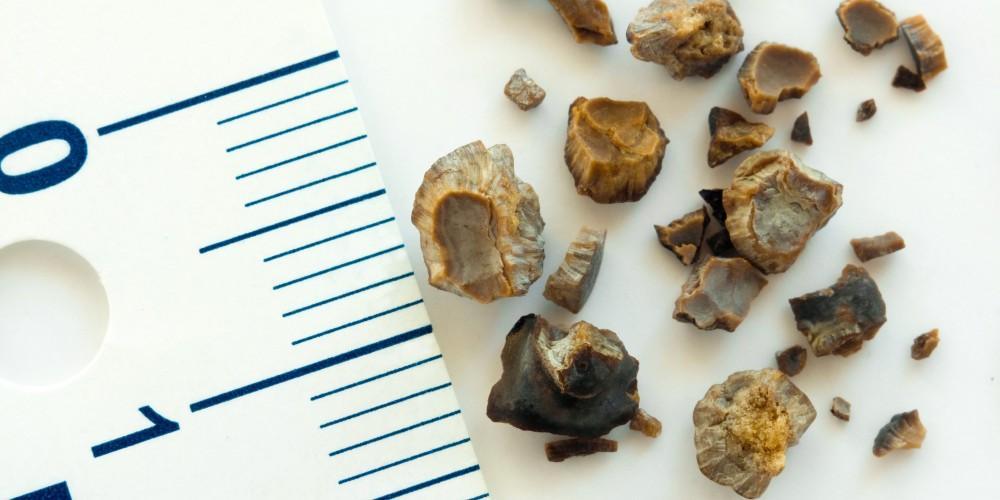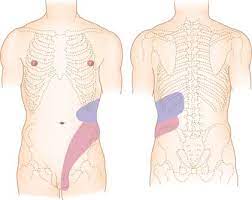10 kidney stone myths
In this article we will describe 10 kidney stone myths.

1. Big Myth Number One – Everyone must drink 3-4 litres of water a day. And this helps to ‘flush out the kidneys’ which prevents kidney stones and UTIs
Many sources of information (mostly non-medical and of dubious reliability) dogmatically assert that humans 3-4 liters of water daily to stay well hydrated and thrive. CKDEx knows no evidence for this dogma.
Many people old people who drink a lot of water develop urgency, frequency and often urinary leakage. This can be dangerous as it can lead to falls (and their consequences including fractures and head injury).
Water requirements are based upon ambient temperature and activity level. If you are sedentary and in a cool environment, your water requirements are significantly less than when in the hot conditions.
Heeding your thirst is one of the best ways of maintaining good hydration status, in other words, drinking when thirsty and not otherwise.
2. Myth – All stones are painful
Not true. Yes, kidney stones are hard masses that form in the urinary tract and may cause pain, bleeding, or an infection or block of the flow of urine. But they are not always painful, especially when they first form.
Many stones cause no symptoms. And for some, the first signs of stones may be blood in the urine or minor back pain. In other cases, however, kidney stones can be excruciatingly painful and cause nausea and vomiting.
3. Myth – Larger stones are always more painful
Not true. Size is only one factor in how painful – and potentially dangerous – a kidney stone can be. The location of the stone is the other element to consider.
A smaller stone in the wrong place can create a blockage that is incredibly painful and requires rapid admission to hospital via A&E.
Depending on the location of the stone, individuals may feel pain in their back or lower abdomen, or they may experience ‘renal colic’.

Site of renal colic, usually starting in the blue area.
This is excruciating, intermittent pain usually in the area between the ribs and hip on one side of the flank or back; it can spreads across the abdomen and often extends to the genital area.
The pain tends to come in waves, gradually increasing to a peak intensity, then fading, over about 20 to 60 minutes.
4. Myth – Restriction of calcium in the diet helps to reduce urinary stone recurrence
75% of kidney stones are made of calcium oxalate. So many people believe that restriction of dietary calcium is a logical means of preventing a recurrence. This is not true.
But, in fact, several studies have shown that restriction of calcium in the diet actually increases the recurrence rate of kidney stones by increasing the oxalate absorption from the intestine.
So calcium should be consumed in moderation and should not be restricted.
5. Myth – Milk causes kidney stones because of its calcium content
Not true (see above). Calcium is your friend, so drink on. The fact is one-way kidney stones are actually caused is a lack of calcium.
6. Myth – Kidney stones always require urgent medical attention
Not true. Some kidney stones (mainly those that cause renal colic) require urgent medical treatment, but most do not need urgent attention.
For example, some individuals, including those with a family history or associated medical conditions such as Crohn disease or ulcerative colitis, are more likely to have chronic or repeating kidney stones.
These people can develop strategies for safely managing pain and passing stones at home.
7. Myth – Kidney stones are more common in men
Not true. A few decades ago, men were far more likely to develop kidney stones. That’s no longer the case. Many more women are suffering from kidney stones today, and men and women are just about equally as likely to develop them.
Researchers believe there are many reasons for this shift, including people in the western world eating a more acidic diet today as well as an increase in the prevalence of obesity, diabetes and other risk factors.
8. Myth – If the pain goes away, you’ve passed your stone
Not true. Unfortunately, the relief that comes from subsiding pain does not necessarily mean the stone has passed. The level of pain can vary as the stone grows and moves.
Studies show that of the stones that pass themselves. In fact 95% will pass within four to six weeks.
However, if the pain does not subside after about a month, the potential of the stone passing itself is reduced, and you will need to see a kidney surgeon (urologist) to get it removed.
9. Myth – Extracorporeal Shock Wave Lithotripsy (ESWL) can be used to treat renal calculi of any size and form
Not true. ESWL – which uses sound energy to shatter stones – is used to treat only smaller calculi (less than 2 cm). If ESWL is used to fragment larger stones, then the fragments may block the ureter; or some of these fragments may remain in the kidney and lead to a recurrence. Also it is not ideal for very hard stones.
10. Myth – If you have one stone, it is unlikely you will get another
Not true. Kidney stones are a very common disease that occurs in over 10% of the population, with a recurrence rate of 70-80% in males and 45-60% in females.
Summary
We have described 10 kidney stone myths. We hope it has been helpful.
Other resources
10 kidney stone facts
Kidney stones and CKD
World’s biggest myth about the kidneys
https://www.youtube.com/watch?v=W0GpIMNTPYg
Last Reviewed on 19 April 2024
